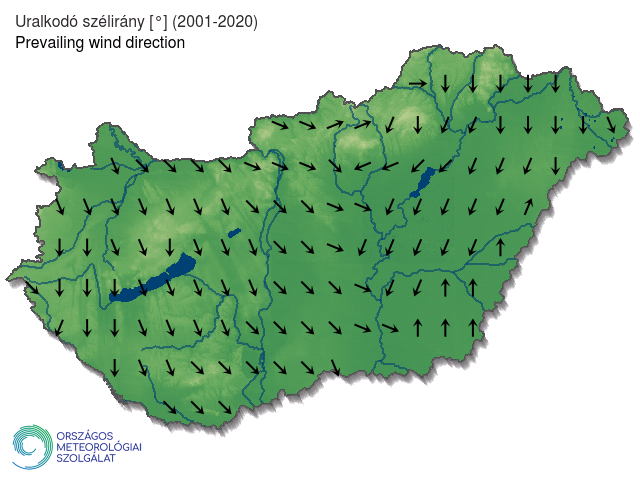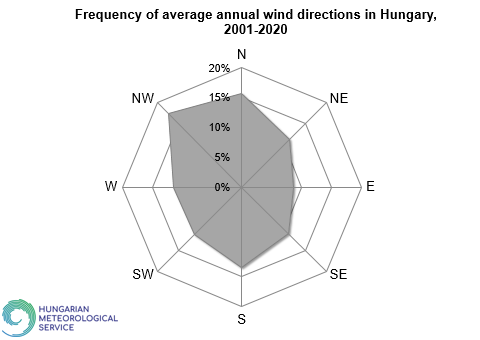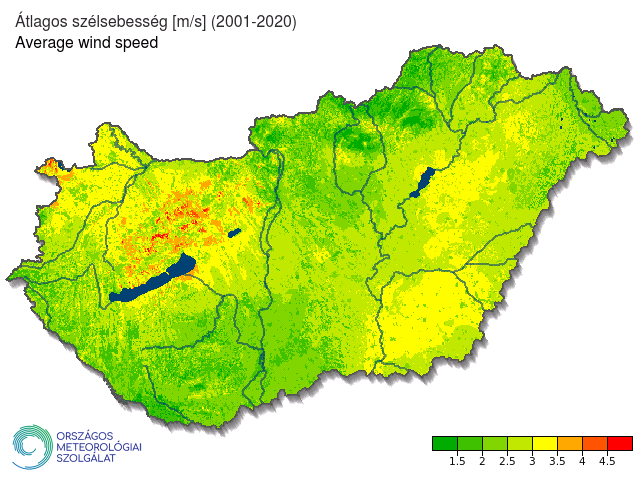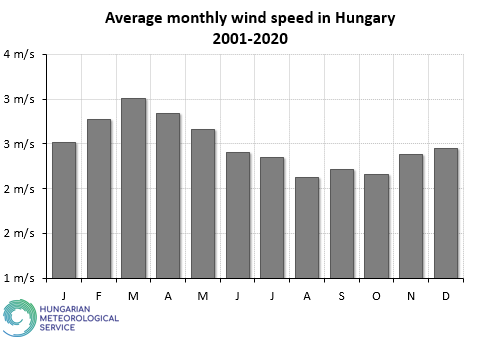The wind conditions of Hungary are influenced by two primary factors, namely the basic flow associated with general circulation and the modifying effect of topography. Wind direction and speed are essential climate parameters. We note that wind direction indicating the direction from which the wind is blowing.

Figure 1
The prevailing directions in Hungary (based on the 2001–2020 period)
In the temperate climate zone, westerly winds prevail at higher altitudes, although the influence of topography is more significant at lower levels. Hungary's geographical location results in a dominant northwest wind direction, with southerly winds exhibiting a secondary maximum (see Figure 1 and 2). The general circulation's primary north-westward flow is most pronounced on the eastern side of the Transdanubian region and between the Danube and Tisza rivers, while the dominant wind direction in the Great Hungarian Plain is northeast. However, the fluctuating circulation phases in the temperate zone mean that the winds are not constant. In Hungary, the relative frequency of the most common wind direction typically ranges from 15-35%. According to the countywide average in the period of 2001-2020, the northwest wind direction was prevalent in 17.4% of cases (see Figure 2). Consequently, the wind does not blow from the dominant direction in 65-85% of cases.

Figure 2
Frequencies of average annual wind directions in Hungary (based on the 2001–2020 period)

Figure 3
The average annual wind speed (m/s) in Hungary (based on the 2001–2020 period)
The local factors significantly influence the actual value of wind speed. Besides macro-scale factors, wind speed is dependent on topography, surface cover, and the presence of obstacles like buildings, trees, and tree lines. Hungary can be classified as a moderately windy region based on the average wind speed of 2-4 m/s. However, substantially different values can be observed due to local factors (refer to Figure 3). Wind speed exhibits a characteristic yearly cycle, with the windiest period during the first half of spring and the lowest wind speeds generally observed at the end of summer and beginning of autumn (refer to Figure 4).

Figure 4
Average monthly wind speed in Hungary (based on the 2001-2020 period)
On average, there are 131 windy days per year in Hungary (i.e., when the speed of the strongest gust exceeds or reaches 10 m/s), and out of these, 33 days are stormy (i.e., with gusts exceeding 15 m/s).











